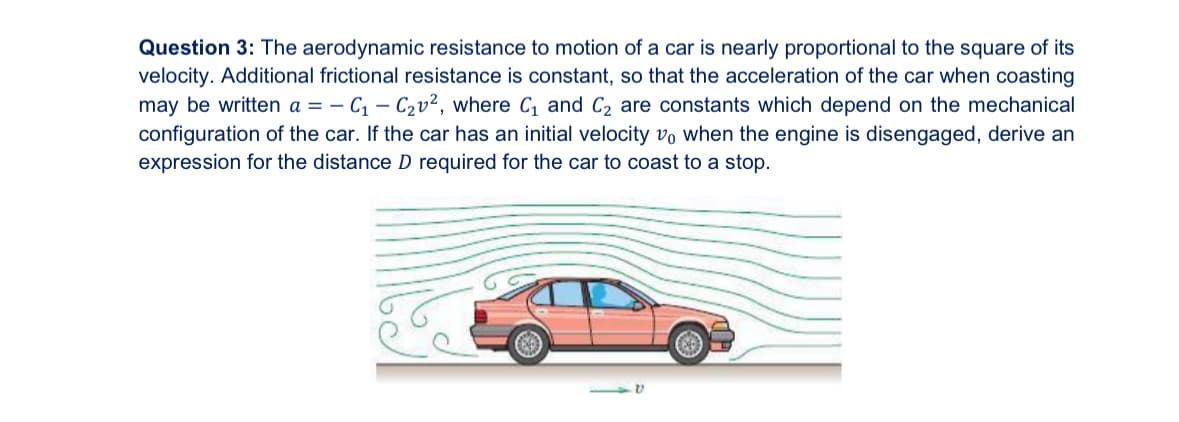Question 3: The aerodynamic resistance to motion of a car is nearly proportional to the square of its velocity. Additional frictional resistance is constant, so that the acceleration of the car when coasting may be written a = - C₁-C2v2, where C₁ and C₂ are constants which depend on the mechanical configuration of the car. If the car has an initial velocity vo when the engine is disengaged, derive an expression for the distance D required for the car to coast to a stop.
Question 3: The aerodynamic resistance to motion of a car is nearly proportional to the square of its velocity. Additional frictional resistance is constant, so that the acceleration of the car when coasting may be written a = - C₁-C2v2, where C₁ and C₂ are constants which depend on the mechanical configuration of the car. If the car has an initial velocity vo when the engine is disengaged, derive an expression for the distance D required for the car to coast to a stop.
Related questions
Question

Transcribed Image Text:Question 3: The aerodynamic resistance to motion of a car is nearly proportional to the square of its
velocity. Additional frictional resistance is constant, so that the acceleration of the car when coasting
may be written a = - C₁ - C₂v², where C₁ and C₂ are constants which depend on the mechanical
configuration of the car. If the car has an initial velocity vo when the engine is disengaged, derive an
expression for the distance D required for the car to coast to a stop.
Expert Solution
This question has been solved!
Explore an expertly crafted, step-by-step solution for a thorough understanding of key concepts.
Step by step
Solved in 3 steps with 3 images

Knowledge Booster
Learn more about
Need a deep-dive on the concept behind this application? Look no further. Learn more about this topic, advanced-physics and related others by exploring similar questions and additional content below.